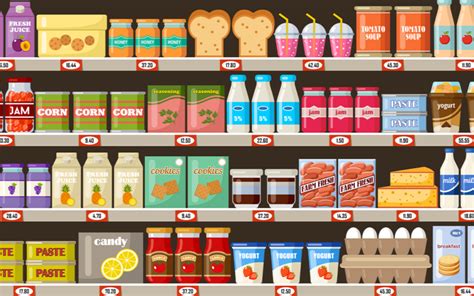The Complete Guide to Creating Winning CPBG Food and Beverage Recipes
The food and beverage industry is a dynamic and competitive landscape. Creating successful products requires more than just a delicious recipe; it demands a deep understanding of consumer trends, market analysis, and a robust product development process. This guide will walk you through the essentials of crafting winning CPBG (Consumer Packaged Goods) food and beverage recipes, from ideation to market launch.
I. Understanding Your Target Market and Consumer Trends
Before even thinking about ingredients, you must understand your target audience. Who are you making this product for? What are their needs, preferences, and dietary restrictions? Thorough market research is crucial here. Consider:
- Demographics: Age, gender, location, income level, and family size.
- Psychographics: Lifestyle, values, interests, and attitudes towards food.
- Dietary Preferences: Vegetarian, vegan, gluten-free, low-carb, organic, etc.
- Current Trends: What’s popular now? What emerging trends are you seeing? Are there any "gaps" in the market you can fill?
II. Recipe Development: From Idea to Prototype
Once you understand your target market, it’s time to get creative! Here's a systematic approach to recipe development:
- Brainstorming: Generate a wide range of recipe ideas based on your market research.
- Ingredient Selection: Carefully choose ingredients that are high-quality, readily available, and align with your target market's preferences and dietary needs. Consider cost-effectiveness and shelf-life as well.
- Recipe Testing: Develop a detailed recipe and test it rigorously. This involves multiple rounds of refinement, tweaking ingredients, and adjusting ratios to achieve the desired taste, texture, and appearance.
- Sensory Evaluation: Involve a panel of tasters to provide feedback on your recipe. This is crucial for identifying potential flaws and ensuring your product is appealing to your target audience.
III. Production and Scaling
Once you have a perfected recipe, the next step is to scale it up for production. This involves:
- Cost Analysis: Carefully analyze the cost of ingredients and production to determine profitability.
- Packaging: Select appropriate packaging that protects the product, is appealing to consumers, and aligns with your brand identity.
- Shelf Life: Conduct shelf-life studies to determine how long your product can be stored without compromising quality.
- Manufacturing Process: Establish efficient and scalable manufacturing processes to ensure consistency and quality control.
IV. Legal and Regulatory Compliance
Before launching your product, it’s essential to ensure that your recipe and packaging comply with all relevant food safety regulations and labeling requirements. This might include:
- Food Safety Certifications: Ensure your production facility meets all necessary food safety standards.
- Labeling Requirements: Accurately label your product with all necessary information, including ingredients, nutritional facts, and allergen warnings.
V. Marketing and Launch
Finally, it's time to bring your product to market! Develop a comprehensive marketing strategy that includes:
- Branding: Create a strong and memorable brand identity.
- Packaging Design: Design attractive and informative packaging.
- Marketing Channels: Choose the appropriate channels to reach your target audience (social media, online advertising, retail partnerships).
By following these steps, you can significantly increase your chances of creating a successful CPBG food and beverage recipe. Remember that creating a winning product is an iterative process that requires continuous refinement and adaptation based on market feedback and emerging trends. Good luck!
